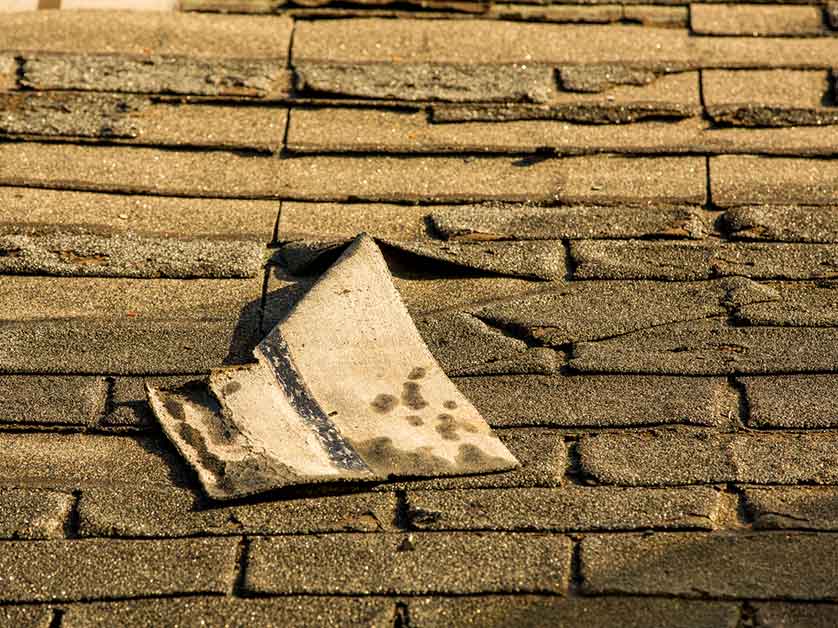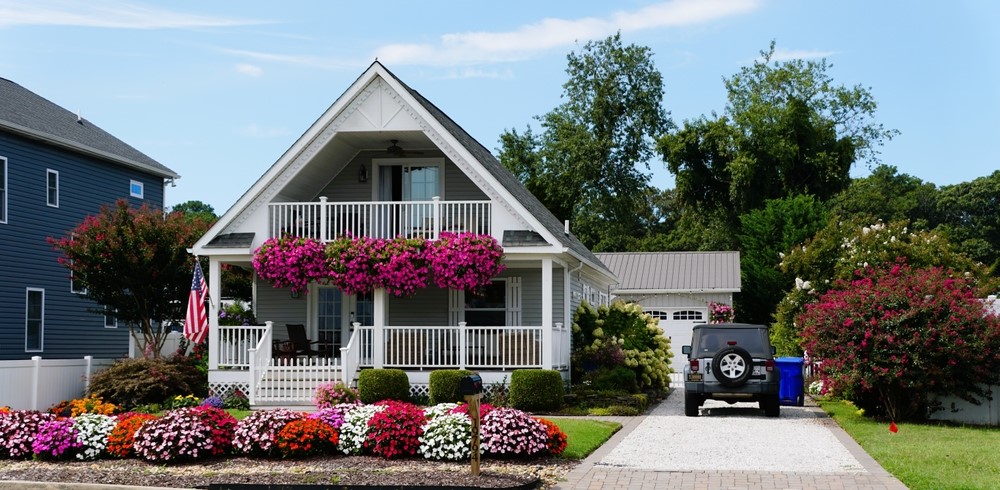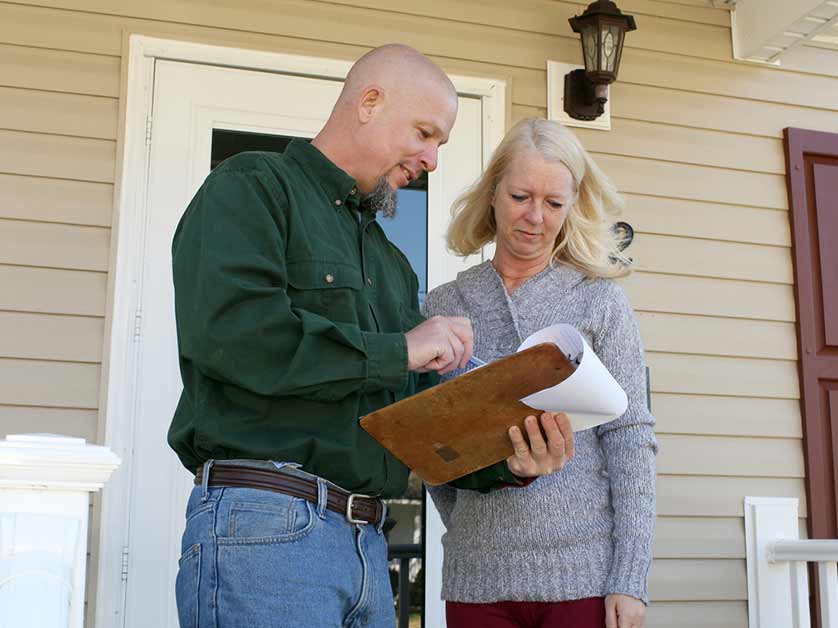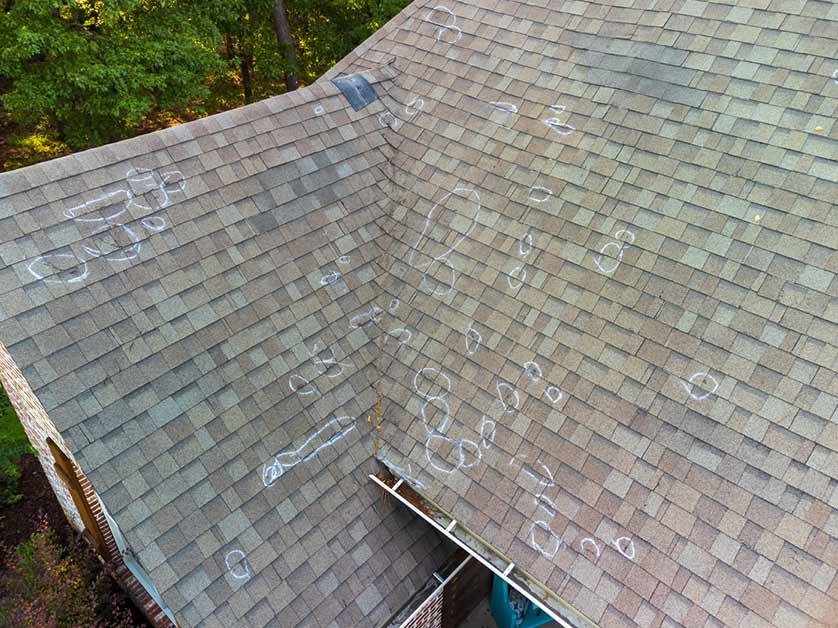Storms can wreak havoc on residential properties, leaving significant damage. One of the most common signs of storm damage involves shingles about to come loose or have gone missing due to strong winds. Called shingle blow-offs, it is an issue that requires immediate attention. Failure to address this can result in greater damage to roofing systems over time.

As a trusted provider of storm damage repair and general roofing services, Hershey Exteriors understands the importance of making the right decision for your property. In this post, we will guide you through dealing with shingle blow-offs and help you determine whether to repair or replace your roof.
Causes of Shingle Blow-Offs
Several factors can contribute to shingle blow-offs on your roof. A common cause is high winds and storms that can rip shingles off the roof, exposing it to potential leaks and other damages. Improper installation may also lead to shingle blow-offs, as shingles that aren't securely fastened to the roof can easily be lifted by winds. Aging and wear can weaken shingles over time, making them more susceptible to being blown away. Finally, material defects in the shingles can also result in blow-offs, as faulty materials may not hold up well under pressure.
Assessing the Damage
The first step in dealing with shingle blow-offs is thoroughly inspecting the affected area. This is essential for identifying the extent of the damage. In most cases, the damage might be more severe than it initially appears. Determining the cause of the blow-off makes it easy to determine whether to repair or replace the shingles.
Your roofing contractor can also assess the missing shingles and the surrounding area for any underlying issues, such as water damage or issues with the truss rod, sheathing, rafters and siding.
Repair or Replace: Factors to Consider
Repairing or replacing the roof with shingle blow-off damage depends on a few factors. These are the following:
- Age of the Roof. Repairing the affected area may be more cost-effective if your roof is relatively young and in good overall condition. However, if your roof is nearing the end of its lifespan, a replacement might be a more sensible long-term investment.
- The Extent of the Damage. A simple storm damage repair may suffice if only a few shingles have gone missing. On the other hand, if the damage is widespread or has compromised the structural integrity of your roof, a full replacement may be necessary.
- Material and Installation Warranty. Check your roof's warranty to see if it covers the damage. Sometimes, the manufacturer or installer may cover repair or replacement costs if the fault happened not through your actions. On another note, make sure the manufacturer has certified the roofer you worked with. Manufacturers usually only honor roofs installed by certified contractors that they've trained and rated through their program.
- Cost of Repair vs. Replacement. While repairing a small section of shingles may be less expensive initially, weighing the long-term costs is also important. If the same issue occurs or more serious problems arise in the future, a full replacement may be more financially prudent in the long run.
- Potential Impact on Surrounding Structures. Consider how the repair or replacement could affect surrounding parts of your property. If the issue has already caused damage to your truss, sheathing, rafters and even your siding, a full replacement might be the best solution.
Preventative Measures to Protect Your Roof
While shingle blow-offs may sometimes be unavoidable, there are steps you can take to minimize the risk and protect your roof from potential damage.
- Regular inspections and maintenance can help identify issues before they escalate, allowing you to address them promptly and avoid more extensive repairs.
- Proper installation techniques are also key to preventing shingle blow-offs. Working with a trusted residential and commercial roofing company ensures that your roof is installed securely and according to industry standards.
- Choosing quality materials can help ensure the longevity and resilience of your roof, reducing the likelihood of shingle blow-offs and other issues.
- Be proactive in addressing any potential issues as soon as they arise. The sooner you can handle a shingle blow-off or other roofing concern, the better off your property will be in the long run.
Getting the Right Contractor for the Job
When addressing shingle blow-offs for your property and finding the right contractor, you can take several essential steps to ensure you make an informed decision. Here's a guide to help you through the process:
- Research local contractors. Look for local residential or commercial roofing contractors. Seek recommendations from friends, family or neighbors who have recently had roofing work done. Additionally, you can check online directories or use search engines to find local roofing companies.
- Read reviews and ratings. Look for reviews and ratings for the contractors you are considering. Check websites like Google, Yelp or Angie's List for customer feedback. Reading about other people's experiences can give you an idea of the contractor's professionalism, quality of work and customer service.
- Inquire about warranties. Ask the contractors about any warranties they offer for their workmanship and the materials they use. A reputable contractor should provide a warranty to guarantee their work and handle any potential issues after completing the job.
- Verify experience and expertise. Inquire about the contractor's experience with roof repairs and shingle replacements. Ask how long they have been in business and whether they have worked on similar projects. An experienced contractor will increase the likelihood of a successful and long-lasting repair.
- Check for proper documentation. Before hiring a contractor, ensure they have the necessary permits and documentation required by local building codes. Compliance with regulations ensures that the work is done to the appropriate standards.
By following these steps and taking the time to research and choose the right contractor, you increase the chances of a successful roof repair or replacement after shingle blow-offs.
Shingle blow-offs could mean the end of your roof if you don't have it repaired or replaced as soon as possible. Have a professional roofer evaluate it to find hidden damage and other telltale signs your roof needs a timely replacement. If you have yet to find a reliable roofer, you can count on us at Hershey Exteriors. Call us, or fill out this contact form to get an estimate.
Tags
Subscribe to Hershey Exteriors's Blog








Comments